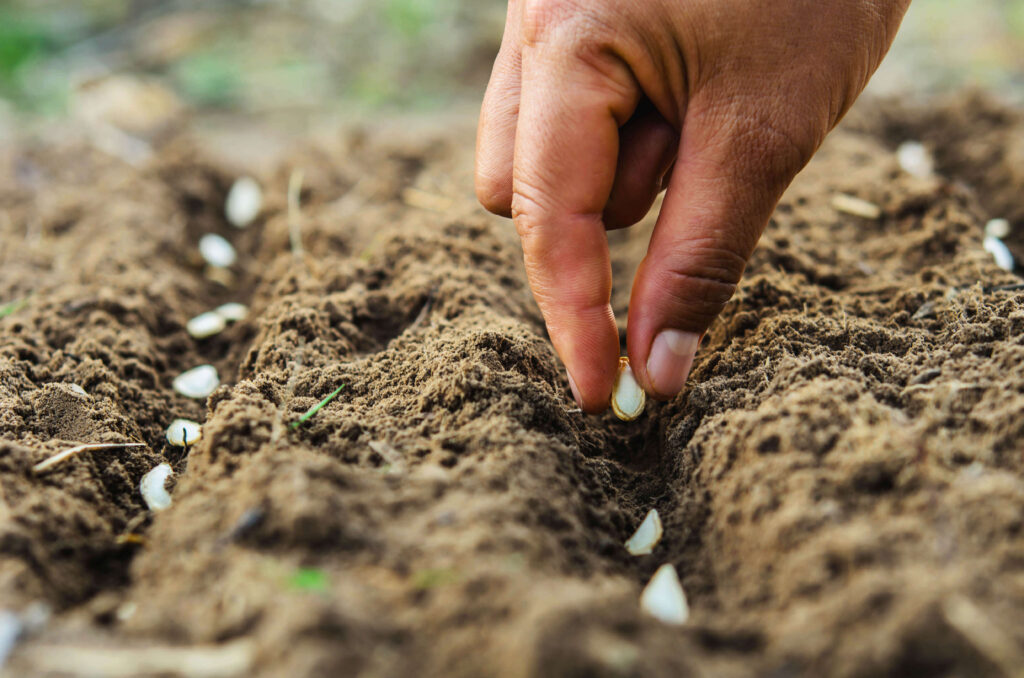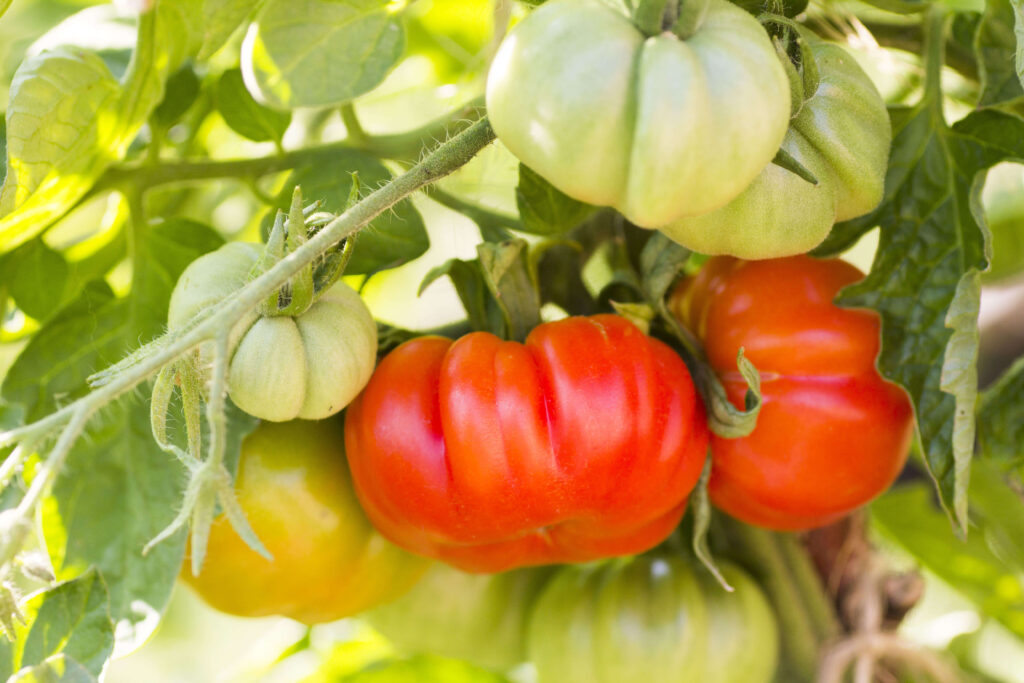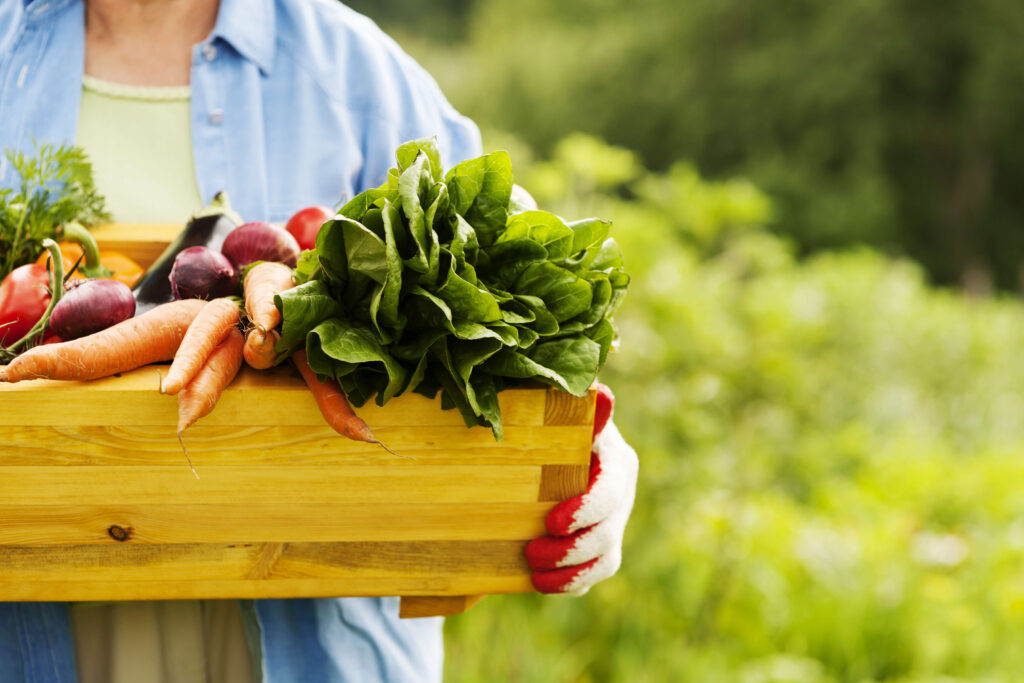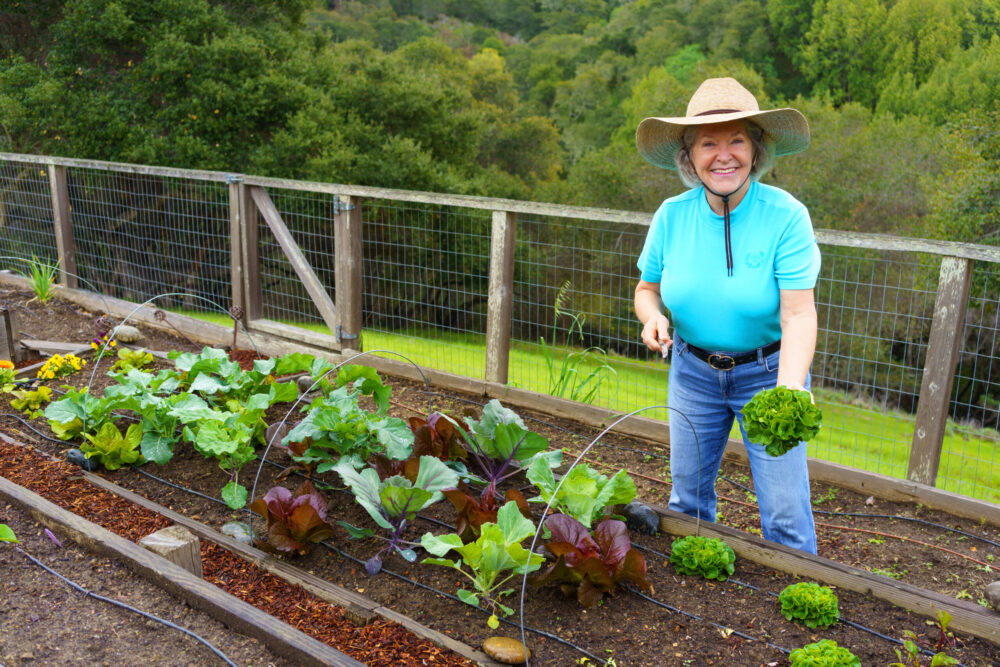Words by Jennifer Jory
Imagine heirloom tomatoes right off the vine from your garden and fresh squash growing in abundance all summer long. As anyone with a green thumb will tell you, the rich flavor of sun-ripened home produce far exceeds anything bought in the store. What’s more, the Peninsula offers a unique environment where growing year-round vegetables is possible.
“We are in a Mediterranean climate like Italy,” explains Carol O’Donnell. She gestures toward Swiss chard and lettuce growing in precise rows in raised beds that terrace down her hillside garden in San Mateo. “You don’t have to stop gardening in December and January,” she says. “We are hot enough to grow all the summer crops, and yet we can grow the winter vegetables year-round as well.” Carol’s broad smile underneath her hat exudes the passion of one who has found her calling.
Carol’s gardening devotion started years ago when she was living in Millbrae with farm animals grazing on nearby land. “I got a load of manure from a horse farm up the hill and the pile was as big as a Volkswagen,” she recalls. “It grew amazing vegetables.” The bountiful harvest from the compost also inspired the creation of a prolific gardener who went on to earn her credentials from the UC Master Gardener Program. “I love to prepare the beds,” she says, “and I like to work the soil with my hands.”

To become a Master Gardener, Carol completed extensive training and research in all aspects of growing plants and volunteered throughout the Peninsula in public gardens and schools.
Currently, she provides her expertise to the public at the Garden Education Center at the San Mateo County Event Center, which features blossoming fruit trees, demonstration beds seeded with vegetables and greenhouses bursting with tomato plants.
“I love to watch the vegetables grow and I grow them like flowers,” beams Carol. “My mantra is if I can’t eat it, I am not interested.” She also offers her wisdom through online classes at the UC Master Gardener website. In her course on year-round edible gardens, she provides practical advice and dispels the idea that you have to adhere to Midwest frost dates. “You have to eat year-round,” she emphasizes. “I like growing food to eat and giving it away in every season.”
If you have never grown vegetables and want to start, Carol recommends beginning small and planting a 4×4-foot bed using your native soil as it is richer than purchased soil and will hold nutrients best.

Another easy approach is to grow vegetables in a large pot. “Grow what your family will eat so that your garden is popular from the get-go,” Carol suggests. “And if you never want to be hungry again, grow summer squash.”
She also advises planting tomatoes and green beans because they are easy to grow and even children can plant them. “Put in Swiss chard and it just keeps feeding you and feeding you, and it will grow year-round,” she guides.
Another idea Carol advocates is sowing corn in a 4×4-foot block so that wind pollinates every ear of corn. In the summer, seed lettuces every two weeks for a continuous supply, which prompts another piece of advice: Harvest these leafy greens in the morning to avoid a bitter taste after exposure to afternoon sun.
When it comes to purchasing seeds and seedlings, Carol notes that both work well, with seeds requiring about five weeks to reach transplant size. “All of our local nurseries have amazing seedlings,” she says.
To prepare your beds, supplement your natural soil with a half-inch of organic compost and a sprinkle of organic alfalfa meal mixed into the top layer of soil. Carol also recommends turkey manure as a valuable organic fertilizer.
If time allows, get your soil tested by one of the labs listed on the Master Gardener website. It takes about two weeks to find out whether you need to amend it in any way.
“The gardener’s shadow is the best growing tool you have,” instructs Carol. “Consistency is key. Go out to the garden every day and spend 20 minutes.”

More guidance: Make sure the garden site receives six to eight hours of full sun a day and follow the instructions on the seed packet or seedling plant label for spacing requirements. And take advantage of local resources. Carol advocates taking a Master Gardener class and digging into the Master Gardener website, which has a treasure trove of tips for aspiring gardeners.
If you don’t have space to grow your own crops, community gardens such as Rinconada Community Garden in Palo Alto, Beresford Recreation Center Garden in San Mateo or the new Los Prados Community Garden in San Mateo make land available for local residents. For over 15 years, Carol planted vegetables at Beresford, where she also taught gardening courses and worked as a garden officer.
“People are so desperate for gardens,” emphasizes Carol, followed by a lament: “When I take the train through the Peninsula, I see all of these beautiful yards with full sun that are not being used.” Through her efforts, she hopes to inspire other would-be gardeners to get outside—to enjoy nature and connect with the land.


